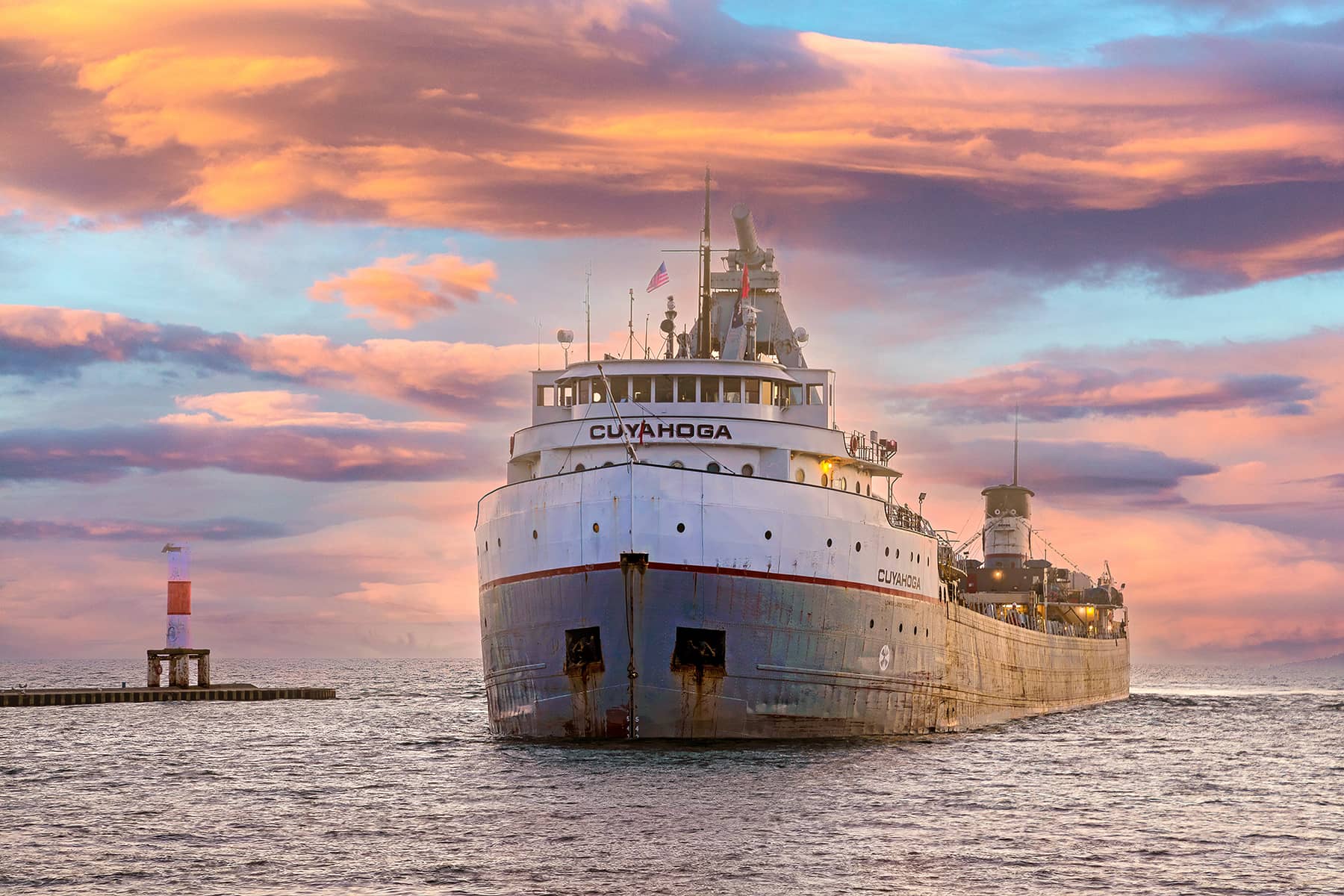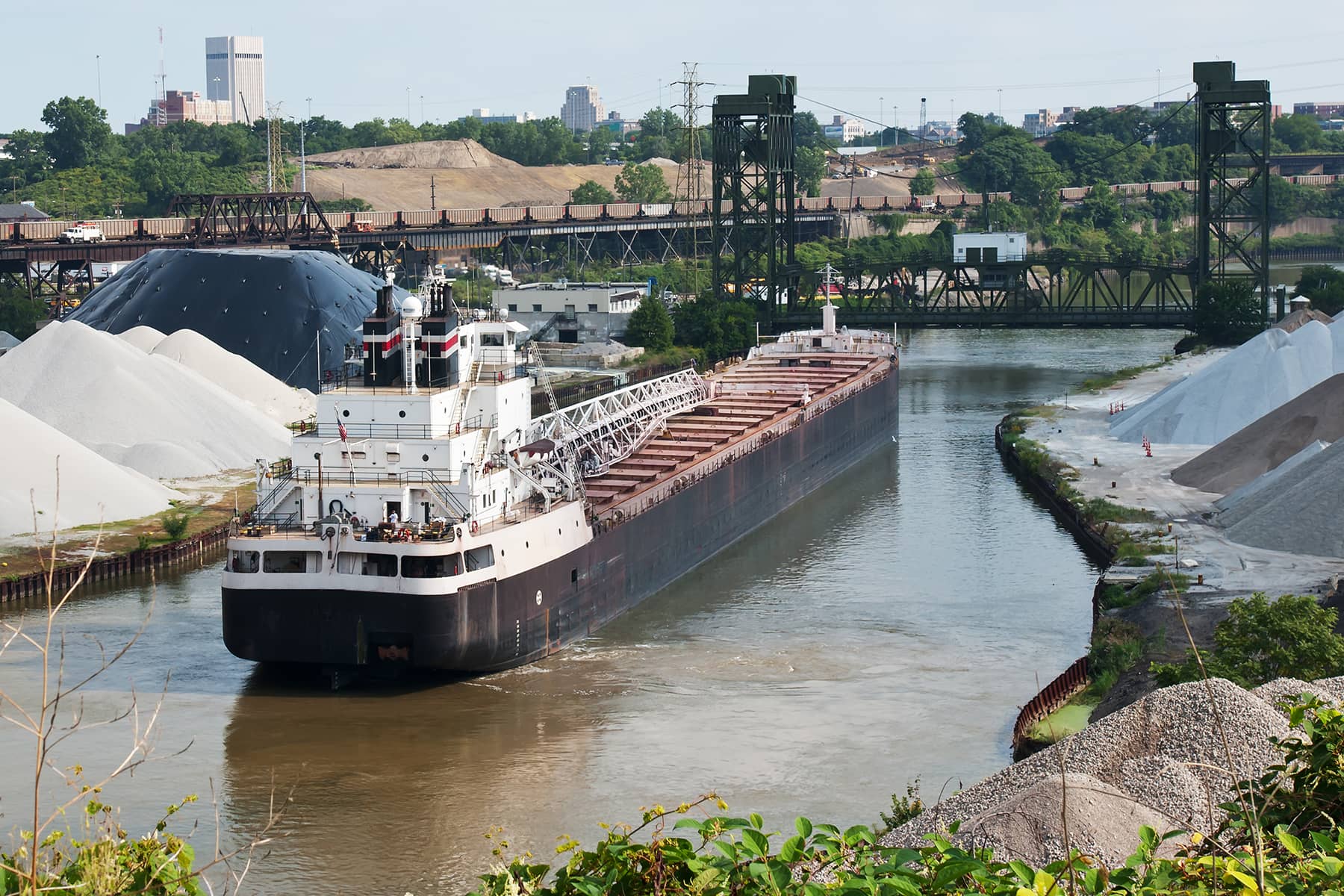
By Anthony Ricciardi, Professor of Biology, Redpath Museum & Bieler School of Environment, McGill University
Freshwater ecosystems are threatened by a host of environmental stressors from human activities. Among the most insidious and impactful of these is invasion by non-native species.
Over the past two centuries, established populations of nearly 190 non-native species of invertebrates, fishes, plants and microbes have been discovered in the Great Lakes basin. They were introduced through several sources and pathways including canals, pet release, bait bucket dumping, aquaculture escapes and — most notably — ballast water discharge from transoceanic ships.
Ballast tanks of ships may contain various life stages of invertebrates, larval fishes and enormous numbers of phytoplankton and zooplankton. The discharge of ballast water is responsible for thousands of coastal invasions worldwide. It has been the most important cause of invasion in the Great Lakes since 1959, when the modern St. Lawrence Seaway was opened to accommodate larger ocean vessels carrying cargo.
In the mid-1980s a cargo ship from eastern Europe began an overseas voyage to the Great Lakes. Before the ship left its home port, water was pumped into its ballast tanks to add weight and stability to safely cross the Atlantic Ocean. The water contained larvae of an invasive freshwater mussel. After the ship passed through the St. Lawrence Seaway, it discharged some of the water — and mussel larvae — at a Great Lakes port, thus introducing the zebra mussel to North America. This scenario has occurred for many other species.
Effective management of the ballast water pathway is crucial to slowing the rate of invasion in the Great Lakes and protecting its resources. Here, I describe an intervention that has apparently achieved this goal.
Gaps in ballast water management
From 1959 to 2006, one new invader was discovered established in the Great Lakes basin every six to seven months, on average. No other freshwater system on the planet has been invaded as frequently. Nearly two-thirds of these species were delivered in ballast water. They include invaders that have reduced native biodiversity, impaired fisheries and caused other ecological and socioeconomic impacts in the Great Lakes.
In 1993, Canada and the United States attempted to control ballast-water invasions by requiring inbound ships to exchange their freshwater ballast with saltwater before entering the Great Lakes. The logic behind this regulation was that freshwater organisms in the ballast tanks would either be purged or killed by exposure to saltwater, and any marine organisms taken up haphazardly during the process would be unable to reproduce in the Great Lakes.
Surprisingly, new non-native freshwater species, such as the fish-hook waterflea, the Ponto-Caspian amphipod and the bloody red mysid shrimp, continued to be discovered in the Great Lakes more than a decade after the regulation.
The regulation’s effectiveness was undermined by inbound vessels that were not required to undergo ballast water exchange because they declared they had no pumpable ballast on board, although there was residual water in their “empty” tanks. In fact, such vessels, which comprised the majority of ships entering the seaway, carried an average 47 tonnes of residual water and 15 tonnes of sediment in their ballast tanks and contained diverse living freshwater invertebrates.
After visiting a Great Lakes port to offload their cargo, these unregulated ships would pump in water to replace the lost weight. Then they would visit another port to take on new cargo and discharge the water, now contaminated with organisms. Several invaders were introduced to the Great Lakes by this pathway.
An unprecedented reduction in invasions
To address this issue, a procedure called saltwater flushing was developed. Ship-board experiments showed that flushing ballast tanks with seawater to the point where tank salinities reached oceanic concentrations substantially reduced the abundance and diversity of organisms in the tanks.
In 2006 and 2008, Canada and the U.S., respectively, mandated all transoceanic vessels to conduct saltwater flushing to ensure that partially filled ballast tanks contained water that matched the salinity of the ocean before entering the Seaway. The regulation was enforced through on-board inspection of every ship.
My colleague, Hugh MacIsaac and I tested the effectiveness of this regulation using historical data. In our study, we compared numbers of newly detected non-native species recorded in the basin during three distinct 13-year time periods: 1981–1993, when ballast water was unregulated; 1994–2006, a period of partial regulation; and 2007–2019, the period of strict regulation that applied the new procedure.
We detected 19 invaders and 26 invaders in the first and second periods, respectively. After saltwater flushing became mandatory, the number fell to only four new invaders in 13 years. Since 2008, new invasions recorded in the Great Lakes basin declined by 85 per cent. The frequency of invasion is now at the lowest rate ever recorded in the basin.
We accounted for changes to water temperature, search effort and ship traffic across these time periods. None of them can explain, even in part, the abrupt decline in invasion rate. While other management efforts — like public education and laws banning possession and sale of particular species — could have contributed to the decline, empirical evidence cited in our study points to ballast water regulation as the overwhelming primary cause.
Invasion risk is reduced, but not eliminated
The Great Lakes remain at risk of invasion from various other pathways, particularly those associated with “live trade” of ornamental pond plants, aquarium pets, bait fish and live animals sold through food markets.
One of these is the tench, a European fish brought illegally to a Québec fish farm in the mid-1980s and now expanding its population in the St. Lawrence River.
Meanwhile, four non-native species of carp (bighead carp, silver carp, grass carp and black carp) raised in fish farms in the southern United States have been spreading throughout the Mississippi River basin over the past several decades and pose an ongoing risk of invading the Great Lakes. Grass carp has been found reproducing in Lake Erie tributaries and is poised to invade parts of the basin.
Finding new strategies to manage these risks is vital to conserving biodiversity and protecting a fishery worth several billions of dollars. Our study has shown the benefit of collaboration between researchers, governments and industry toward this goal.
Mаrіа Dryfhоut and Stоnе Phоtоs
Originally published on The Conversation as Ballast water management is reducing the flow of invasive species into the Great Lakes
Support evidence-based journalism with a tax-deductible donation today, make a contribution to The Conversation.















